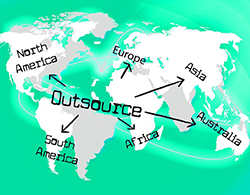 That Works has an extensive report and checklist about what’s known as the “contingent workforce.” This includes temporary employees, leased employees, and more. Here are some questions to consider in these relationships:
That Works has an extensive report and checklist about what’s known as the “contingent workforce.” This includes temporary employees, leased employees, and more. Here are some questions to consider in these relationships:
Who is responsible for what? — As with any arrangement, it’s important to study the contract. For example, if an employee isn’t working out, who should be responsible for firing them? Consider every aspect of managing personnel from hiring through performance management and retention to termination.
How much are you paying to outsource various HR functions? — Whether you’re outsourcing because you don’t have the time, expertise, or desire to do the job in house, you’ll have to pay for someone else to do it for you. What’s the competitive rate? What about the provider’s experience and results? Do your homework and interview at least a couple of providers and their clients before you choose one.
What is the provider’s hiring process? — They should be able to show it to you in writing. If they can’t, pick someone else. Make sure that the provider does proper skill testing, character assessments, background checks, extensive interviews, immigration checks and pre-hire physicals.
What references can the provider offer? — Don’t just ask for references, get the names of companies who have used the vendor during the past year. See if the vendor is willing to share this information and allow you to interview those companies. Ask “What will these companies tell us?” Then do Google research to see what comments you can find online. What’s the knowledge on board at the vendor? — How long has the person who does the hiring and staffing been doing their job? What are their credentials? Is there expertise on board to help you with any compliance concerns?
Does the agent carry the right insurance? — Depending on whose payroll is involved, the law requires employers to provide Workers Compensation benefits, as well as withholding unemployment and Social Security taxes, and more. If the temp or leasing agency treats their workers as independent contractors you could end up being in a heap of trouble.
Does the agency provide employees benefits? — Remember, if a worker walks and talks like your employee, they’re probably going to be considered your employee, whether they’re a sole employee or in a joint employer relationship. If an employee receives no benefits from the provider, you can easily face a hefty benefits claim down the road.
What about union activities? — To what extent has the agency been faced with unionization efforts? Your temporary workforce might be considered part of an existing bargaining unit and thus covered by your union contract. HR That Works members should view the extensive Contingent Worker Report and Checklist.






